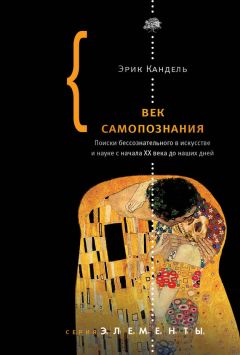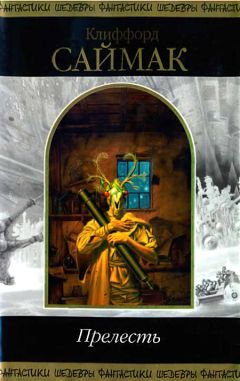Эрик Кандель - Век самопознания. Поиски бессознательного в искусстве и науке с начала XX века до наших дней

Помощь проекту
Век самопознания. Поиски бессознательного в искусстве и науке с начала XX века до наших дней читать книгу онлайн
Dimberg, U., Thunberg, M., and K. Elmehed Unconscious facial reactions to emotional facial expressions // Psychological Science 11 (1) 2000: 86–89.
Fechner, G. T. Vorschule der Aesthetik (Experimental Aesthetics). Leipzig: Breitkopf and Hartel, 1876.
Gombrich, E. H. Art and Illusion. A Study in the Psychology of Pictorial Representation. Princeton and Oxford: Princeton University Press, 1960.
Gombrich, E. H. The Image and the Eye. London, Phaidon Press, 1982.
Harrison, C., and P. Wood Art in Theory, 1900–2000: An Anthology of Changing Ideas. Malden, MA: Blackwell Publishing, 2003.
Ochsner, K. N., Beer, J. S., Robertson, E. R., Cooper, J. C., Kihlstrom, J. F., D’Esposito, M., and J. E. D. Gabrieli The neural correlates of direct and reflected self-knowledge // NeuroImage 28 (2005): 797–814.
Onians, J. Neuroarthistory. New Haven: Yale University Press, 2007.
Perner, J. Understanding the Representational Mind. Cambridge, MA: MIT Press, Bradford Books, 1991.
Ramachandran, V. S. The science of art: A neurological theory of aesthetic experience // Journal of Consciousness Study 6 (1999): 15–51.
Riegl, A. The Group Portraiture of Holland. Intro. by W. Kemp. Los Angeles: Getty Research Institute for the History of Art and the Humanities, 1999.
Saxe, R., Jamal, N., and L. Powell My body or yours? The effect of visual perspective on cortical body representations // Cerebral Cortex 16 (2) 2005: 178–182.
Spurling, H. Matisse the Master: A Life of Henri Matisse: The Conquest of Colour, 1909–1954. New York: Alfred A. Knopf, 2007.
Глава 25. Биология “вклада зрителя”:моделирование чужой психикиAsperger, H. Die Autistichen Psychopathen im Kindesalter // Archiv für Psychiatrie und Nervenkrankheiten 117 (1944): 76–136.
Blakemore, S. J., and J. Decety From the perception of action to the understanding of intention // Nature Reviews Neuroscience 2 (8) 2001: 561–567.
Bleuler, E. P. Dementia Praecox, or The Group of Schizophrenias (1911). New York: International University Press, 1950.
Bleuler, E. P. The physiogenic and psychogenic in schizophrenia // American Journal of Psychiatry 10 (1930): 204–211.
Bodamer, J. Die Prosop-Agnosie // Archiv für Psychiatrie und Nervenkrankheiten 179 (1947): 6–53.
Brothers, L. The Social Brain: A Project for Integrating Primate Behavior and Neurophysiology in a New Domain / In: Foundations in Social Neuroscience. J. T. Cacioppo et al., eds. Cambridge, MA: MIT Press, 2002.
Brown, E., Scholz, J., Triantafyllou, C., Whitfield-Gabrieli, S., and R. Saxe Distinct regions of right temporo-parietal junction are selective for theory of mind and exogenous attention // PLoS Biology 4 (3) 2009: 1–7.
Calder, A. J., Burton, A. M., Miller, P., Young, A. W., and S. Akamatsu A principle component analysis of facial expressions // Vision Research 41 (2001): 1179, 1208.
Carr, L., Iacoboni, M., Dubeau, M. C., Mazziotta, J. C., and G. L. Lenzi Neural mechanisms of empathy in humans: A relay from neural systems for imitation to limbic areas // Proceedings of the National Academy of Sciences 100 (9) 2003: 5497–5502.
Castelli, F., Frith, C., Happe, F., and U. Frith Autism, Asperger syndrome and brain mechanisms for the attribution of mental states to animated shapes // Brain 125 (2002): 1839–1849.
Chartrand, T. L., and J. A. Bargh The chameleon effect: The perception-behavior link and social interaction // Journal of Personality and Social Psychology 76 (6) 1999: 893–910.
Chong, T., Cunnington, R., Williams, M. A., Kanwisher, N., and J. B. Mattingley fMRI adaptation reveals mirror neurons in human inferior parietal cortex // Current Biology 18 (20) 2008: 1576–1580.
Cutting, J. E., and L. T. Kozlowski Recognizing friends by their walk: Gait perception without familiarity cues // Bulletin of the Psychonomic Society 9 (1977): 353–356.
Dapretto, M., Davies, M. S., Pfeifer, J. H., Scott, A. A., Stigman, M., and S. Y. Bookheimer Understanding emotions in others: Mirror neuron dysfunction in children with autism spectrum disorders // Nature Neuroscience 9 (1) 2006: 28–30.
Decety, J., and T. Chaminade When the self represents the other: A new cognitive neuroscience view on psychological identification // Conscious Cognition 12 (2003): 577–596.
De Gelder, B. Towards the neurobiology of emotional body language // Nature 7 (2006): 242–249.
Dimberg, U., Thunberg, M., and K. Elmehed Unconscious facial reactions to emotional facial expressions // Psychological Science 11 (1) 2000: 86–89.
Flavell, J. H. Cognitive development: Children’s knowledge about the mind // Annual Review of Psychology 50 (1999): 21–45.
Fletcher, P. C., Happe, F., Frith, U., Baker, S. C., Dolan, R. J., Frackowiak, R. S. J., and C. D. Frith Other minds in the brain: A functional imaging study of “theory of mind” in story comprehension // Cognition 57 (1995): 109–128.
Freiwald, W. A., Tsao, D. Y., and M. S. Livingstone A face feature space in the macaque temporal lobe // Nature Neuroscience 12 (9) 2009: 1187–1196.
Frith, C. Making Up the Mind. How the Brain Creates Our Mental World. Oxford: Blackwell Publishing, 2007.
Frith, U. Autism: Explaining the Enigma. Oxford: Blackwell Publishing, 1989.
Frith, U., and C. Frith Development and neurophysiology of mentalizing // Philosophical Transactions of the Royal Society of London, Series B. Biological Science 358 (2003): 439–447.
Gallagher, H. L., and C. D. Frith Functional imaging of “theory of mind” // Trends in Cognitive Science 7 (2003): 77–83.
Gombrich, E. H. Reflections on the History of Art. R. Woodfield, ed. Berkeley, CA: University of California Press, 1987.
Gombrich, E. H. Art and Illusion: A Study in the Psychology of Pictoral Representation. London, Phaidon Press, 2004.
Gombrich, E. H., Hochberg, J., and M. Black Art, Perception, and Reality. Baltimore: Johns Hopkins University Press, 1972.
Gross, C. A Hole in the Head: More Tales in the History of Neuroscience. Cambridge, MA: MIT Press, 2009. Pp. 179–182.
Gross, C., and R. Desimone Properties of inferior temporal neurons in the macaque // Advances in Physiological Sciences 17 (1981): 287–289.
Iacoboni, M. Neural mechanisms of imitation // Current Opinion in Neurobiology 15 (6) 2005: 632–637.
Iacoboni, M., Molnar-Szakacs, I., Gallese, V., Buccino, G., Mazziotta, J. C., and G. Rizzolatti Grasping the intentions of others with one’s own mirror neuron system // PloS Biology 3 (3) 2005: 1–7.
Kanner, L. Autistic disturbances of affective contact // Nervous Child 2 (1943): 217–250.
Kanwisher, N., McDermott, J., and M. M. Chun The fusiform face area: A module in human extrastriate cortex specialized for face perception // Journal of Neuroscience 17 (11) 1997: 4302–4311.
Klin, A., Lim, D. S., Garrido, P., Ramsay, T., and W. Jones Two-year-olds with autism orient to non-social contingencies rather than biological motion // Nature 459 (2009): 257–261.
Langer, S. K. Philosophy in a New Key: A Study in the Symbolism of Reason, Rite, and Art. 3rd ed. Cambridge, MA: Harvard University Press, 1979.
Mitchell, J. P., Banaji, M. R., and C. N. MacRae The link between social cognition and selfreferential thought in the medial prefrontal cortex // Journal of Cognitive Neuroscience 17 (8) 2005: 1306–1315.
Ochsner, K. N., Knierim, K., Ludlow, D., Hanelin, J., Ramachandran, T., and S. Mackey Reflecting upon feelings: An fMRI study of neural systems supporting the attribution of emotion to self and other // Journal of Cognitive Neuroscience 16 (10) 2004: 1748–1772.
Ohnishi, T., Moriguchi, Y., Matsuda, H., Mori, T., Hirakata, M., and E. Imabayashi The neural network for the mirror system and mentalizing in normally developed children: An fMRI study // Neuroreport 15 (9) 2004: 1483–1487.
Pelphrey, K. A., Morris, J. P., and G. McCarthy Grasping the intentions of others: The perceived intentionality of an action influences activity in the superior temporal sulcus during social perception // Journal of Cognitive Neuroscience 16 (10) 2004: 1706–1716.
Pelphrey, K. A., Sasson, N. J., Reznick, J. S., Paul, G., Goldman, B. D., and J. Piven Visual scanning of faces in autism // Journal of Autism and Developmental Disorders 32 (2002): 249–261.
Perner, J., Aichhorn, M., Kronbichler, M., Staffen, W., and G. Ladurner Thinking of mental and other representations. The roles of left and right temporoparietal junction // Social Neuroscience 1 (2006): 245–258.
Perrett, D. I., Smith, P. A., Potter, D. D., Mistlin, A. J., Head, A. S., Milner, A. D., and M. A. Jeeves Visual cells in the temporal cortex sensitive to face view and gaze direction // Proceedings of the Royal Society of London, Series B: Biological Science 223 (1985): 293–317.
Piaget, J. Child’s Conception of the World. London: Routledge & Kegan Paul, 1929.
Puce, A., Allison, T., Asgari, M., Gore, J. C., and G. McCarthy Differential sensitivity of human visual cortex to faces, letter strings, and textures: A functional magnetic resonance imaging study // Journal of Neuroscience 16 (16) 1996: 5205–5215.
Puce, A., Allison, T., Bentin, S., Gore, J. C., and G. McCarthy Temporal cortex activation in humans viewing eye and mouth movements // Journal of Neuroscience 18 (1998): 2188–2199.
Ramachandran, V. S. Beauty or brains // Science 305 (2004): 779–780.
Riegl, A. The Group Portraiture of Holland. Intro. by W. Kemp. Los Angeles: Getty Research Institute for the History of Art and the Humanities, 1999.
Rizzolatti, G., Fadiga, L., Gallese, V., and L. Fogassi Premotor cortex and the recognition of motor actions // Cognitive Brain Research 3 (2) 1996: 131–141.
Saxe, R. Uniquely human social cognition // Current Opinion in Neurobiology 16 (2006): 235–239.
Saxe, R., Carey, S., and N. Kanwisher Understanding other minds: Linking developmental psychology and functional neuroimaging // Annual Review of Psychology 55 (2004): 87–124.
Saxe, R., and N. Kanwisher People thinking about thinking people. The role of the temporo-parietal junction in “theory of mind” // NeuroImage 19 (4) 2003: 1835–1842.
Saxe, R., Xiao, D. K., Kovacs, G., Perrett, D. I., and N. Kanwisher A region of right posterior temporal sulcus responds to observed intentional actions // Neuropsychologia 42 (11) 2004: 1435–1446.
Singer, T., Seymour, B., O’Doherty, J., Kaube, H., Dolan, R. J., and C. Frith Empathy for pain involves the affective but not sensory components of pain // Science 303 (2004): 1157–1162.
Strack, F., Martin, L. L., and S. Stepper Inhibiting and facilitating conditions of the human smile: A nonobtrusive test of the facial feedback hypothesis // Journal of Personality and Social Psychology 54 (5) 1988: 766–777.
Yarbus, A. L. Eye Movements and Vision. New York: Plenum Press, 1967. [Рус. оригинал: Ярбус А. Л. Роль движений глаз в процессе зрения. М.: Наука, 1965.]
Zaki, J., Weber, J., Bolger, N., and K. Ochsner The neural bases of empathic accuracy // Proceedings of the National Academy of Sciences USA 106 (27) 2009: 11382–11387.
Глава 26. Как мозг регулируетэмоции и эмпатиюBerridge, K. C., and M. L. Kringelbach Effective neuroscience of pleasure: Rewards in humans and animals // Psychopharmacology 199 (2008): 457–480.
Blakeslee, S., and M. Blakeslee The Body Has a Mind of Its Own. How Body Maps in Your Brain Help You Do (Almost) Everything Better. New York: Random House, 2007.
Cohen, P. Next big thing in English: Knowing that they know that you know // New York Times, April 1: C1.
Damasio, A. The somatic marker hypothesis and the possible functions of the prefrontal cortex // Proceedings of the Royal Society of London B 351 (1996): 1413–1420.
Damasio, A. The Feeling of What Happens: Body and Emotion in the Making of Consciousness. New York: Harcourt Brace, 1999.
Darwin, C. The Expression of the Emotions in Man and Animals. New York: Appleton-Century-Crofts, 1872.
Ditzen, B., Schaer, M., Gabriel, B., Bodenmann, G., Ehlert, U., and M. Heinrichs Intranasal oxytocin increases positive communication and reduces cortisol levels during couple conflict // Biological Psychiatry 65 (9) 2009: 728–731.
Donaldson, Z. R., and L. J. Young Oxytocin, vasopressin, and the neurogenetics of sociality // Science 322 (2008): 900–904.
Gray, J. A., and N. McNaughton The Neuropsychology of Anxiety: An Enquiry into the Functions of the Septo-Hippocampal System. 2nd ed. Oxford Psychology Series No. 33. Oxford: Oxford University Press, 2000.
Insel, T. R. The challenge of translation in social neuroscience: A review of oxytocin, vasopressin, and affiliative behavior // Neuron 65 (2010): 768–779.
Jhou, T. C., Fields, H. L., Baxter, M. G., Saper, C. B., and P. C. Holland The rostromedial tegmental nucleus (RMTg), a GABAergic afferent to midbrain dopamine neurons, encodes aversive stimuli and inhibits motor responses // Neuron 61 (5) 2009: 786–800.
Kamin, L. J. Predictability, Surprise, Attention, and Conditioning / In: Punishment and Aversive Behavior. Campbell, B. A., and R. M. Church, eds. New York: Appleton-Century-Crofts, 1969. Pp. 279–296.

























